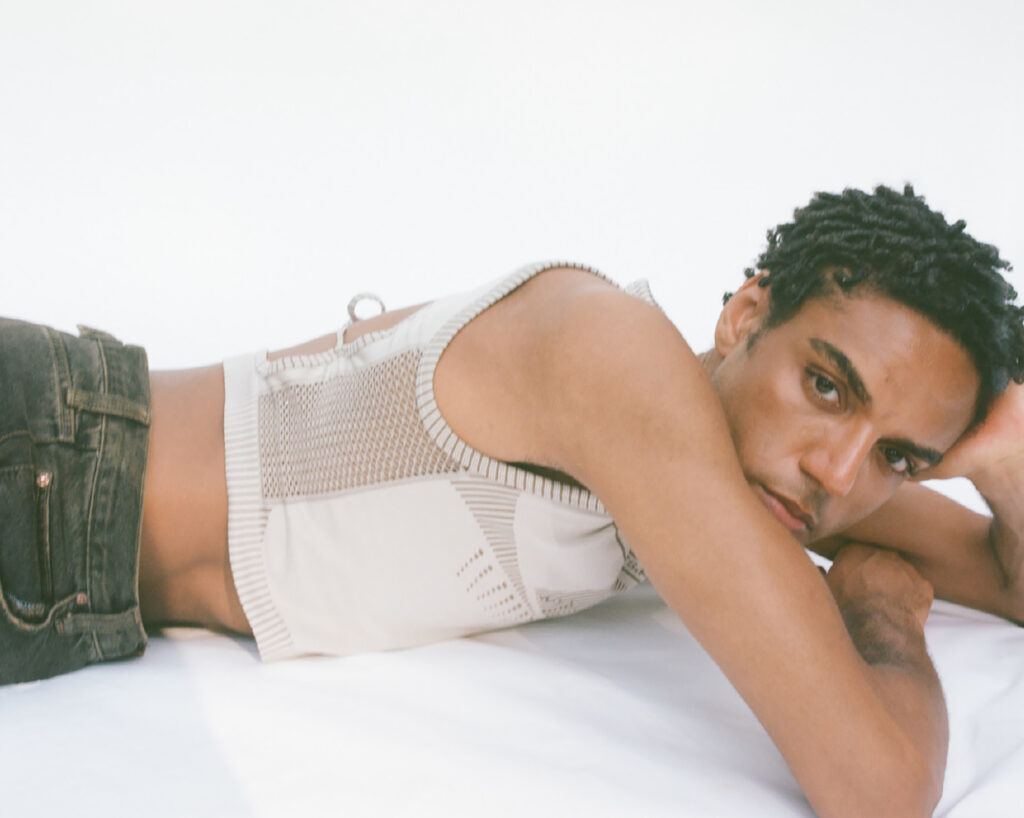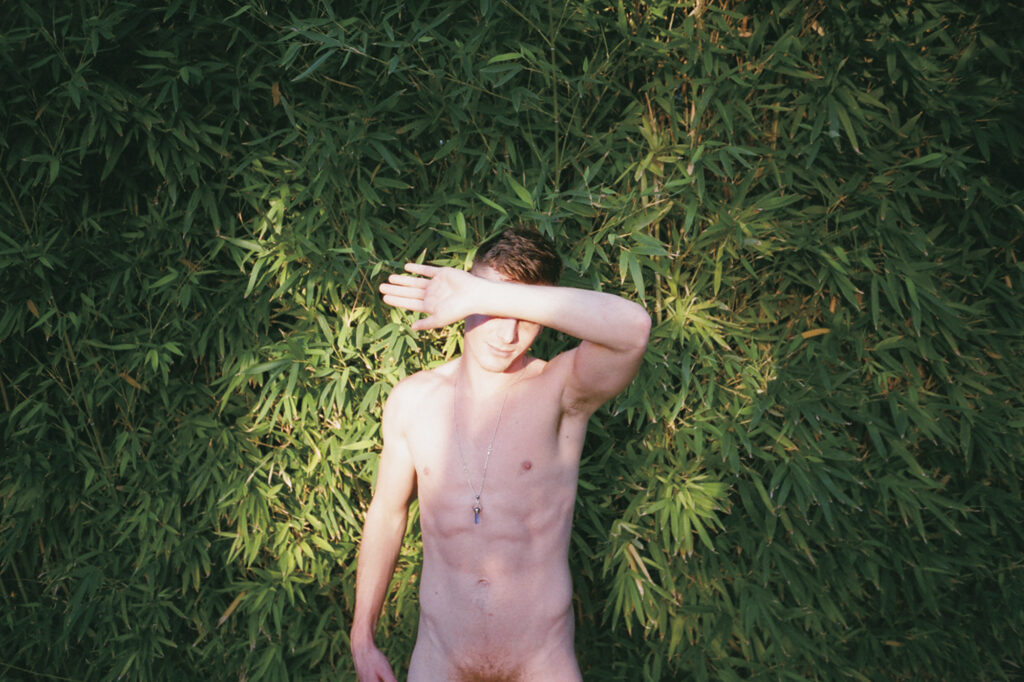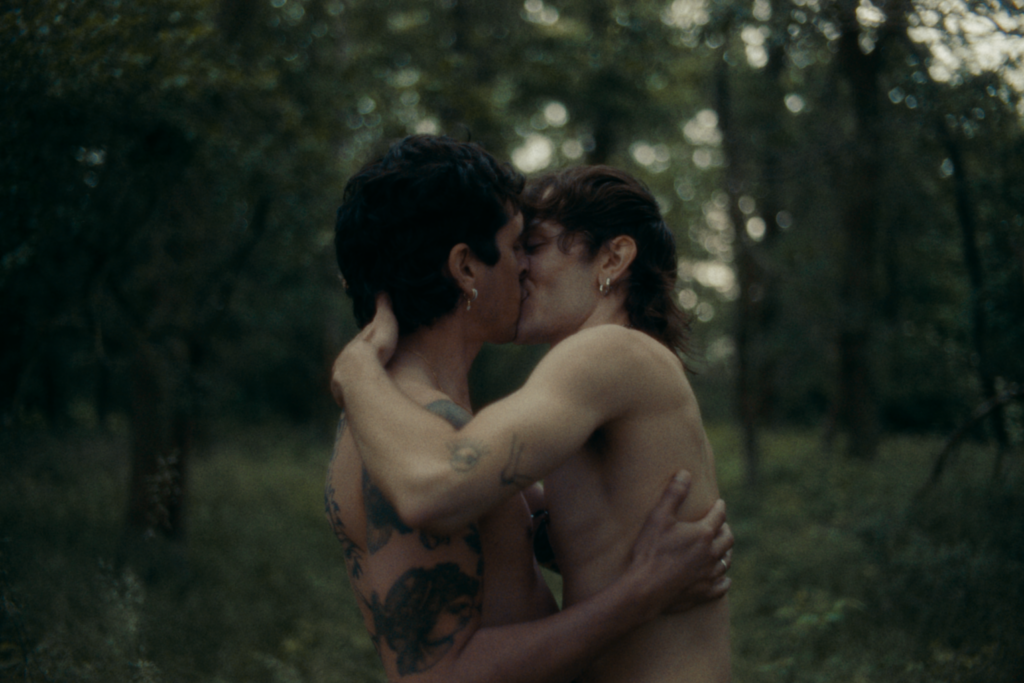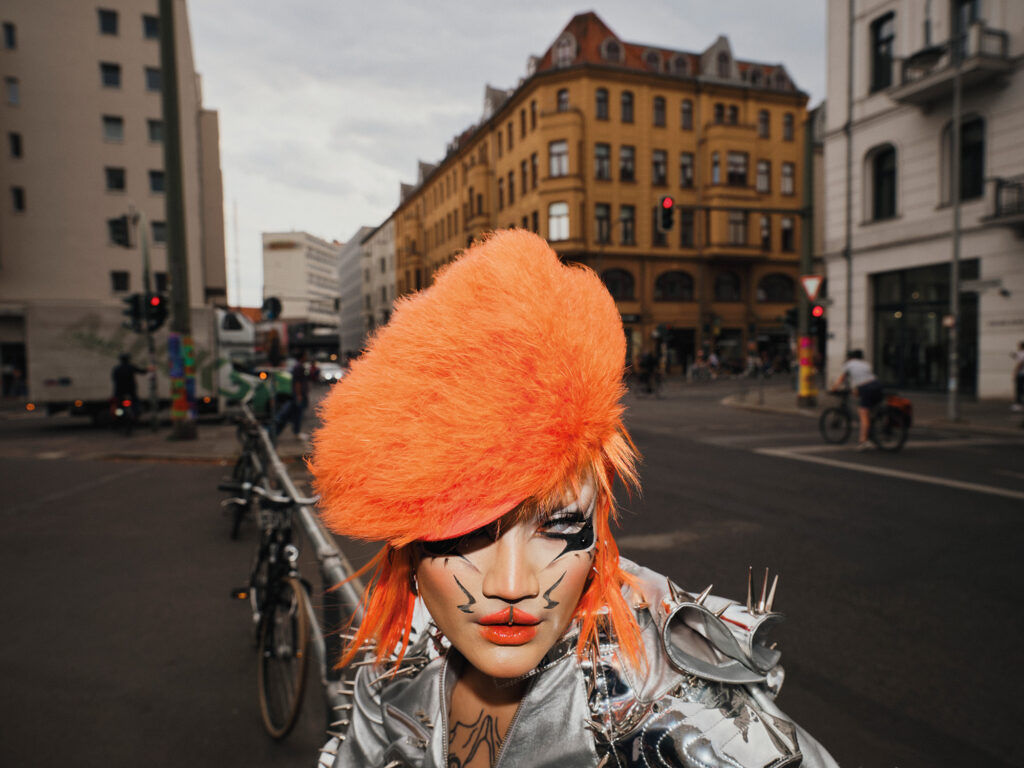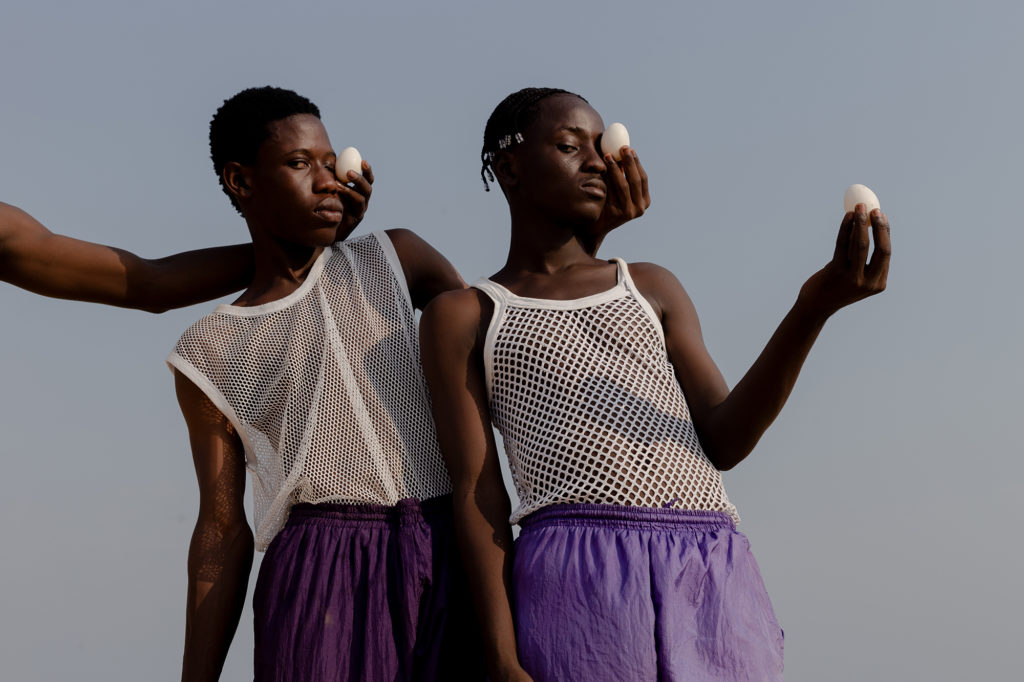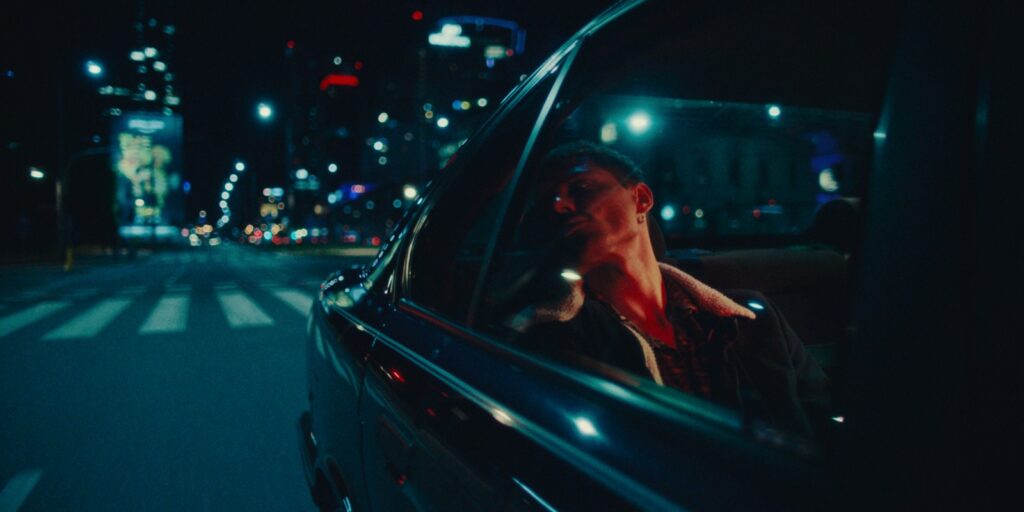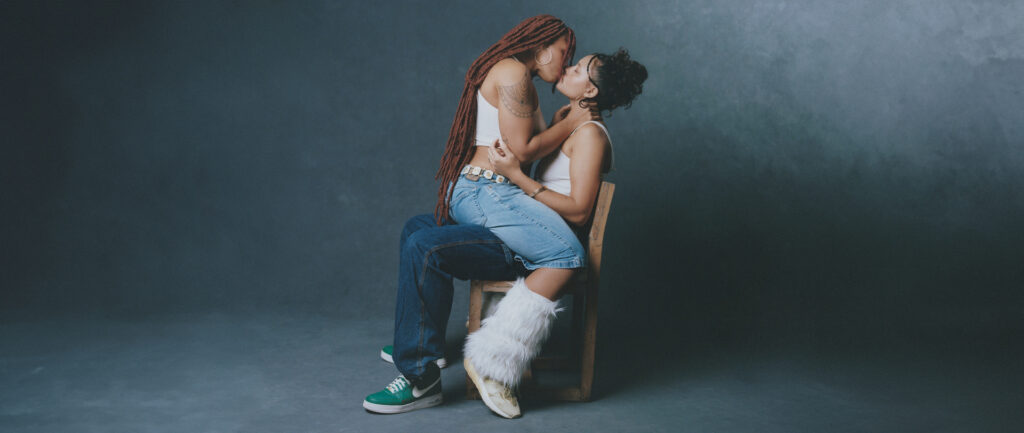Veronique Charlotte: Portraying Queer Bodies Through Gender Project Is A Political Statement
Artist Veronique Charlotte
Words Javier Zamora-Kalazich
A photoshoot with a friend in their flat in London back in 2018 gave birth to the first portrait of Gender Project. Today there are 400 people captured in three different countries by the lens of Veronique Charlotte (they/them), the artist and creative director behind the social photography project. Presented in four major cities in Europe, Berlin has been its last success after exhibiting in Soho Friends and Alte Münze.
A mix between arts, activism and the opportunity to connect deeper would probably define Gender Project but also Veronique, or Ronnie -as their friends called them. Loud and clear on their beliefs from a young age they prefer to stay away from the spotlight. Even though their presence is in every detail of the portrait and video series, they prefer to understand their role as a tool to give voice and promote the conversation about identities, bodies and LGBTQIA+ rights.
In a sweet interview with Container Love, Ronnie shares their thoughts and experience about gender dysphoria, their career in high fashion, the disappointments of the industry and the need of raising the level of the conversation when talking about LGBTQIA+ legislation and rights. Especially in times when extreme conservative parties are challenging the gained sense of progress around the world.
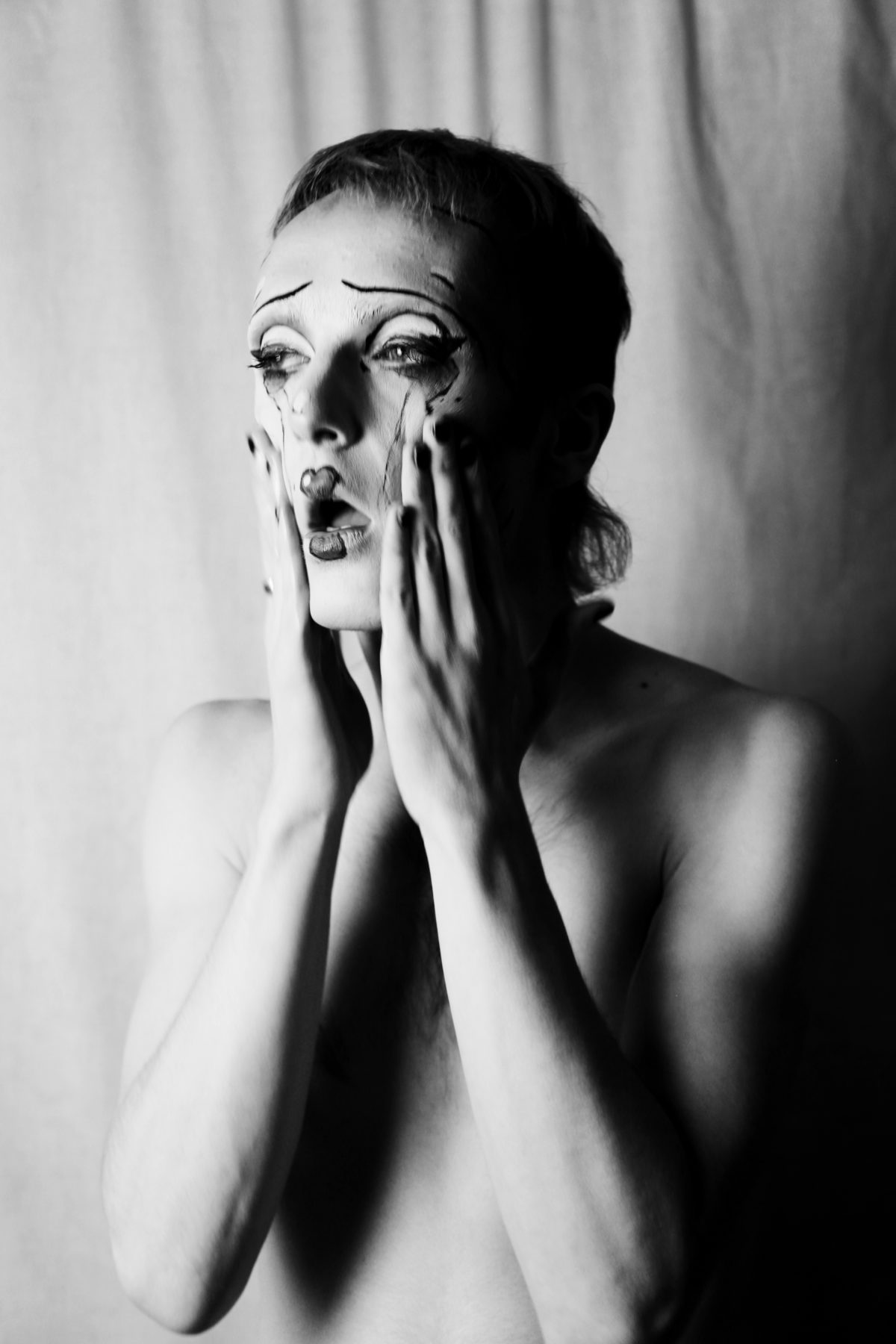

“When I was younger I modeled for Prada for two years and for a twisted reason I was feeling really comfortable in that space. For my body dysmorphia was a shocking stage. I was no man or woman, but a mannequin.”
How was your personal process about questioning your gender identity?
It started quite early. I went through a lot of gender dysphoria growing up as I resisted to figure out the world as a girl. I remember asking my mom to wear trousers instead of a skirt, or not using fashion for gender conforming roles, and she was very supportive.
As a single mom and a straightforward feminist, she was my first inspiration. She has always had this ‘as soon as you are happy, I am happy’ attitude, but also pushing me to always go where my beliefs are, which sets me up as a little rebel.
One thing is the very close circle, but then how did it go when connecting this identity with your context growing up, like the society or the institutions?
I found a lot of confrontation but also big support when I was young, especially during school. It was part of shaping my identity. I mean, fifteen years ago to talk about sexual education in Italy was already problematic, so you can imagine when it comes to religion and so on. I took the opportunities I had to promote what I believed. I questioned what I think was not right and of course that caused confrontation, especially with teachers, sadly mostly the women that tried to push me into a gender I did not want for me.
On the other hand, I found great comfort through the sports and theater communities. They really helped me to just be myself in a place where I could wear whatever I wanted and where I could play different roles to explore my own identity. For me was harder to understand why being called ‘lesbian’ by some girls at school was meant to be offensive. It was never an insult, but society was pointing out what they felt uncomfortable with. Not wearing skirts or not fitting their standards, it was never my problem so it was never about me.
For Veronique, shaping their identity is a continuous journey. These days, in their 30s, there is a deep process of empathy with every new person that participates in Gender Project. ‘Is not about taking a picture and then goodbye, next. Every portrait is an open vulnerable conversation to discover the intimate side of the person in front of me. Empathy is the power I hold through this project to connect and as a consequence discover new parts of myself’, explains Ronnie.
From being a Prada model they also worked assisting for a few years the creative director of Trussardi. In a promising path, Ronnie decided to leave Italy and moved to London in 2014. They recall the British capital as the place where they consciously questioned for the first time the gender roles in society. While working for Dazed and Confused and Hunger TV Magazine, and also assisting well-known photographer Rankin, Ronnie in their life out of work got closer to the queer communities of the rave scene; a powerful self-revealing process.


From a fashion career to social activism through visual arts, how was that process?
I felt very free to be whoever I wanted without judgments after I moved to London. I did my ‘first coming out’ publicly something like 10 years ago and that statement slowly started to integrate into my immediate world and the people around me. There was a process that led into that transition that came from things I also carried from Milano.
When I was younger I modeled for Prada for two years and for a twisted reason I was feeling really comfortable in that space. For my body dysmorphia was a shocking stage. I was no man or woman, but a mannequin. I was probably perceived androgynous so I was doing fittings for the male collections and I loved that. Then when I worked at Trussardi I was seeing everyone expressing themselves in whichever way they felt through fashion. Everyone was so powerful and creative, so the 21 year old me was fascinated by playing around and discovering myself.
So fashion was also a place of inspiration besides the promotion of certain beauty standards or conforming roles?
Of course, don’t get me wrong, I truly believe that fashion has a big power itself, but has to be used in the right way, with the right bodies. This is a problem we are still facing when the brands are promoting campaigns of diversity but faking them instead of using the real people.
I saw during my professional career in fashion the horrible side too. While creating images of a beautiful world, none of that existed backstage. I had very uncomfortable work situations with explicit racism and misogyny, and I was in London, one of the most cosmopolitan and multiethnic cities in the world. So that pushed me to the edge where going to work was not nice anymore and I was not the only one. By the end of 2017 several of us quit our jobs because of this.
Gender Project unofficially started in 2016 when Ronnie’s friend, Elliot, came saying: ‘I really like to wear women’s clothes, wigs, and doing make-up. I don’t know where I’m going with this, but I like to feel different’. For Ronnie was not ‘different’, but another side of them to explore. That was the hint to organize a photoshoot in their London flat that turned into hours of conversation about gender roles and society, and also into the cover of the first exhibition of Gender Project in London (2019).
The next day Ronnie felt that something had clicked and it was time to act upon it. After digging into terminologies, legal regulations and studies, they wrote a manifesto and an open call looking for people to come half naked to tell their story in front of the camera in their place -a stranger’s apartment. After a deep breath, they posted online. Ten hours later there were 65 applications: a total -unexpected and scary- success.


A hundred portraits in each of these four major cities: London (2019), Milano (2020), Roma (2021) and Berlin (2022). How to approach everyone’s individuality and also not turn it into something repetitive?
I believe that everyone has a superpower and I try to discover it while shooting. A lot of people talk about coming out of the closet, but no one talks about walking inside of it. That is also a hard part, where you have to take not only your clothes but the layers in which society has shaped you. Then you are truly naked and being yourself can be fucking scary. I try to capture that exact moment in my people, and that is very unique to each of them, therefore never will be the same. Everyone chooses how they want to come into the shoot, I don’t add directions on grooming or styling, I see myself more as a tool to give them a space.
In this uniqueness that each one carries, how do you approach the usage of ‘labels’ about gender and sexual identities?
I believe that we need labels on a first stage to get to know what we have in front of us. Is like having salt and pepper on the table: they might look exactly the same but if you don’t label them you can make a mess on what you are eating. At first, it is something necessary. It gives you information to understand better, to do your research. Then afterwards it becomes a different thing.
We keep talking about pronouns, labeling, and the right way to communicate, etcétera. I believe they are already incorporated in the world. They are essential but I would love people to start talking about legal regulations because this is what we are missing.
It is almost 2023, I don’t believe nowadays, at least on this side of the world, that someone hasn’t heard of those concepts. It has been in everybody’s face for the past years. If people don’t want to acknowledge them that is not the problem of the queer community, it is their problem. So I would rather invite people to talk about what we actually need in the legal system, because we still have some of us afraid of actually just going on the streets.


Italy has recently elected a coalition that put Giorgia Meloni as a Prime Minister, the first woman but also representing the most conservative party of the political spectrum. How do you think this could affect LGBTQIA+ communities?
To be honest I am really scared. We have a beautiful country but I feel there will never be much regulation in Italy about LGBTQIA+ people, especially not now. I don’t know if we will have any protection so we have to see what happens in the next six months. I feel that a lot of people might want to leave the country. It is sad, but I did in the past -as many other friends did too- and I also understand. It doesn’t mean we are not connected to our country anymore, we will actually be presenting soon in Italy Gender Project again to show that we are here, we exist, and we are everywhere.
So what is the future of Gender Project?
The series will continue next year in Barcelona, and then we are planning to close the European exhibition in Istanbul. We know that it could be dangerous but we are willing to evaluate all the possibilities to keep our people safe and give some visibility to the queer communities in Turkey. After that, the idea is to continue Gender Project for the next five years outside of Europe.
When I started six years ago giving shape to this, I thought this was an art project. It took me a few minutes to immediately realize that this was political. Gender Project is a form of art-activism, it is a statement about bodies, identities and their uniqueness. If by doing this we can give voice and a stage to different people we will continue portraying them around the world in our commitment towards equality.





